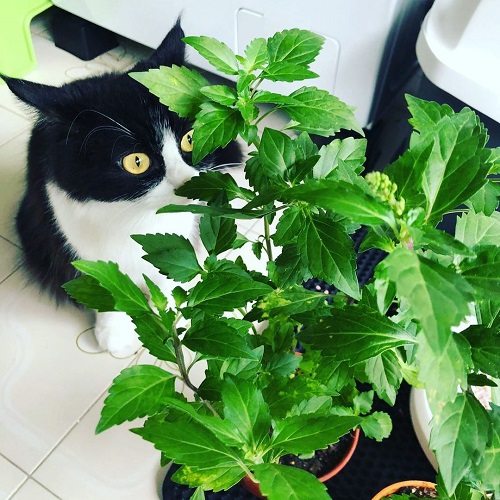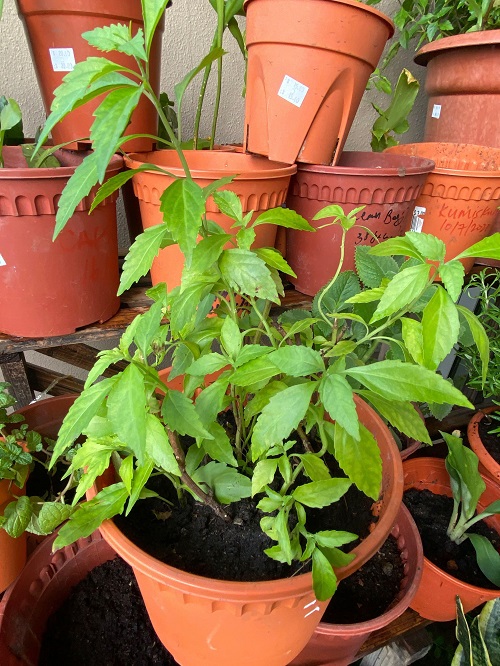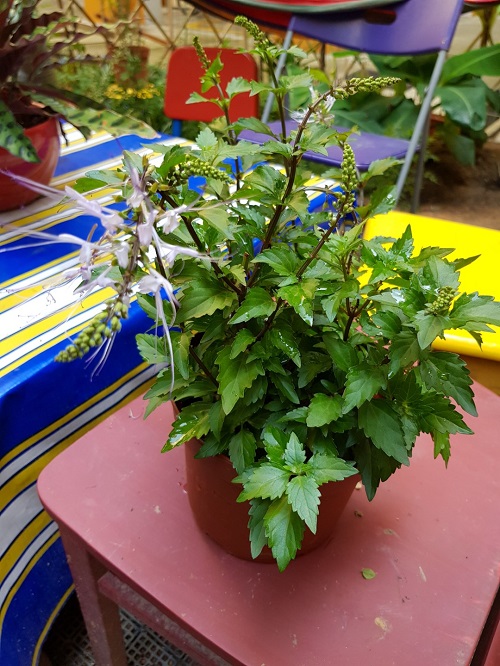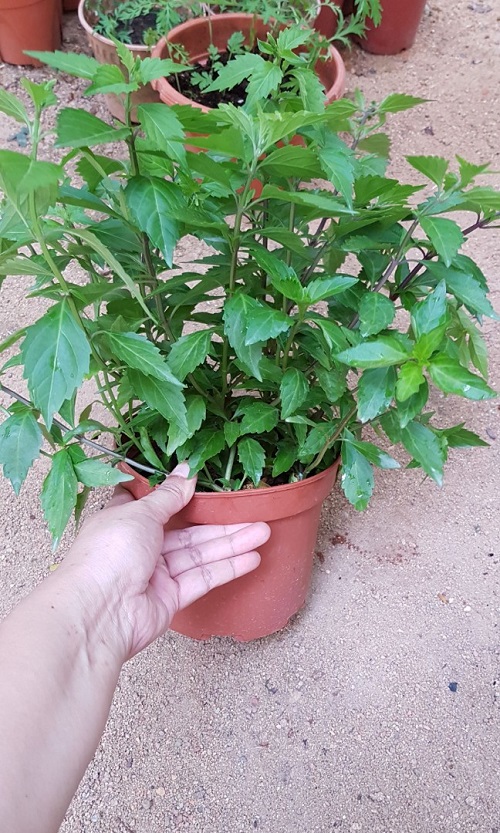The Cat Whiskers Plant can be a wonderful addition to any space, thanks to its evergreen nature. Let’s have a look at how to grow it.

If you’re a plant enthusiast, you may have come across the Cat Whiskers Plant. It has become increasingly popular as a houseplant in recent years, and for good reason. Let’s have a look, why!
Learn how to grow catnip here
What is a Cat Whiskers Plant?
Cat Whiskers Plant, also known as Java Tea or Kidney Tea, is a beautiful and easy-to-grow plant that is native to Southeast Asia. It is a member of the Lamiaceae family, which includes many other popular herbs like mint, thyme, and rosemary.
The Cat Whiskers Plant is named for its distinctive flowers, which resemble a cat’s whiskers. Its flowers are typically purple or white and grow in clusters at the ends of long stems. The plant itself can grow up to three feet tall and has a bushy, sprawling growth habit.
Its leaves are also noteworthy, as they have serrated edges and a slightly fuzzy texture. In addition to being beautiful, the plant has a number of active constituents, such as flavonoids and essential oils, which are thought to have anti-inflammatory and diuretic properties.
Botanical Name: Orthosiphon stamineus
USDA Zone: 8-12
Propagating Cat Whiskers Plant
Different Ways to Propagate Cat Whiskers Plant:
Among these, propagating from stem cuttings is often considered the easiest method.
Stem Cuttings: An Easy Method for Propagating Cat Whiskers Plant
- Look for a vigorous Cat Whiskers Plant with healthy stems.
- Cut a 4-6 inch long section just below a node using a sharp, clean pair of scissors or pruning shears.
- Remove the lower leaves, leaving the top ones intact.
- Dip the cut end into rooting hormone powder (optional, but it can increase success rate).
- Fill a pot with well-draining potting mix or a mixture of sand and peat.
- Insert the cutting about 1-2 inches into the soil.
- Gently pat the soil around the cutting to ensure good contact.
- Cover the pot with a plastic bag or place it in a propagator to retain humidity.
- Make sure the bag doesn’t touch the leaves; you can use sticks to hold it away from the plant.
- Place the pot in a bright location but out of direct sunlight.
- Keep the soil slightly moist, but avoid overwatering.
- Check regularly for signs of growth, which usually appears in 3-4 weeks.
Propagate Any Plant Cutting Quickly Using this Trick
Best Pot Size for Cat Whiskers Plant
1. Starting Pot Size:
- Size: 4 to 6 inches in diameter.
- Why: Smaller pots are suitable for starting cuttings or growing seedlings, as they provide enough room for initial growth without being too large.
2. Transplanting to a Larger Pot:
- Size: 12 to 16 inches in diameter.
- Why: As the plant matures, it will need more room for its root system to develop. A 12 to 16-inch pot offers sufficient space for a full-grown Cat Whiskers Plant.
Here are Plant Pot Sizes from Inches to Gallon
Cat Whiskers Plant Growing Information
Light
Cat Whiskers Plants require bright, indirect light to grow properly. While they can tolerate some sunlight, too much can cause the leaves to scald. It is best to place the plant near a window that receives morning or afternoon sun.
If you don’t have a window that provides enough light, you can supplement it with artificial grow lights.
Soil
These plants prefer well-draining soil that is rich in organic matter. A good potting mix for Cat Whiskers Plants would be a combination of peat moss, perlite, and vermiculite.
The soil should be kept moist but not waterlogged, as the plant is sensitive to overwatering.
Watering
Cat Whiskers Plants need to be watered regularly, but not too frequently. Between waterings, the plant needs to have a slight chance to dry out.
Overwatering can cause root rot, which is fatal to the plant. It is best to water the plant from the bottom by placing it in a dish of water and allowing the soil to soak up the water through the drainage holes.
Temperature
These plants prefer warm temperatures between 65 and 75 degrees Fahrenheit. They can tolerate slightly cooler temperatures, but it is best to keep them away from cold drafts and extreme temperature fluctuations.
The Cat Whiskers Plants can also benefit from increased humidity, so it is a good idea to mist the leaves regularly.
Cat Whiskers Plant Care
Fertilizer
Cat Whiskers Plants benefit from regular fertilization during the growing season (spring and summer). A balanced, water-soluble fertilizer can be used every two weeks to provide the necessary nutrients for healthy growth.
It is important not to over-fertilize the plant, as this can lead to burned leaves and root damage.
Pests and Diseases
These plants are relatively pest and disease resistant, but they can still be susceptible to common houseplant pests like spider mites and mealybugs. These pests can be treated with insecticidal soap or neem oil.
Root rot can also be a problem if Cat Whiskers Plant is overwatered – so it is important to monitor the soil moisture levels.
Cat Whiskers Plant Benefits

The Cat Whiskers Plants has been used in traditional medicine for centuries to treat various ailments, and its popularity is spreading throughout the world. Growing the cat whisker plant has several other advantages in addition to its medicinal qualities, such as:
- Aesthetic Value: The Cat Whiskers Plants is an attractive plant with delicate, green leaves and tiny, white flowers. It can be grown in pots, making it perfect for balconies, terraces, and indoor spaces.
- Low Maintenance: The Cat Whiskers Plant is a hardy plant that requires minimal care. It can tolerate a wide range of temperatures and can grow in both full sun and partial shade.
- Air Purifier: It can help improve the quality of the air in your home or office and create a healthier living environment.
- Medicinal Properties: The plant contains several active compounds – due to which it has been used in traditional medicine to treat various ailments.




